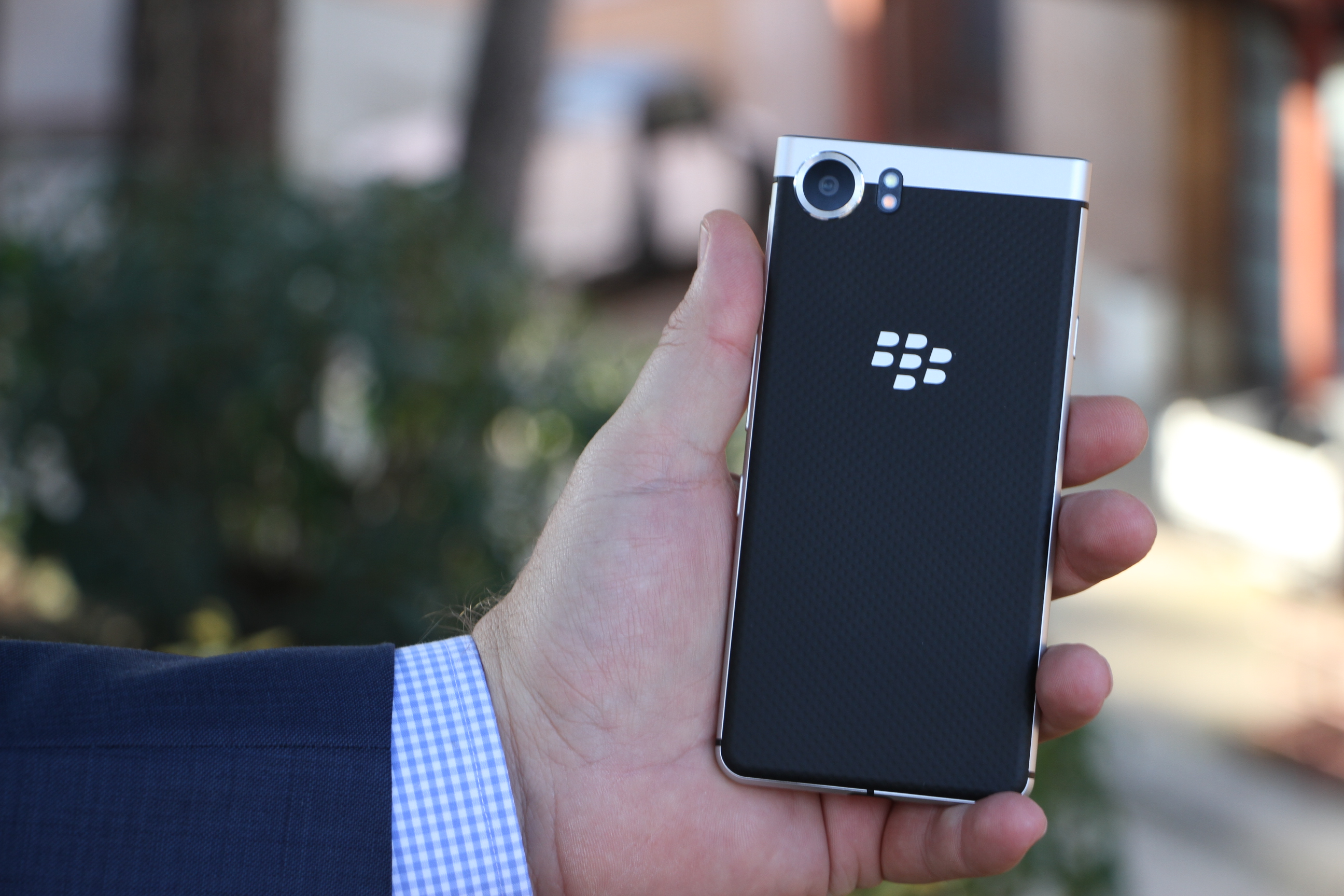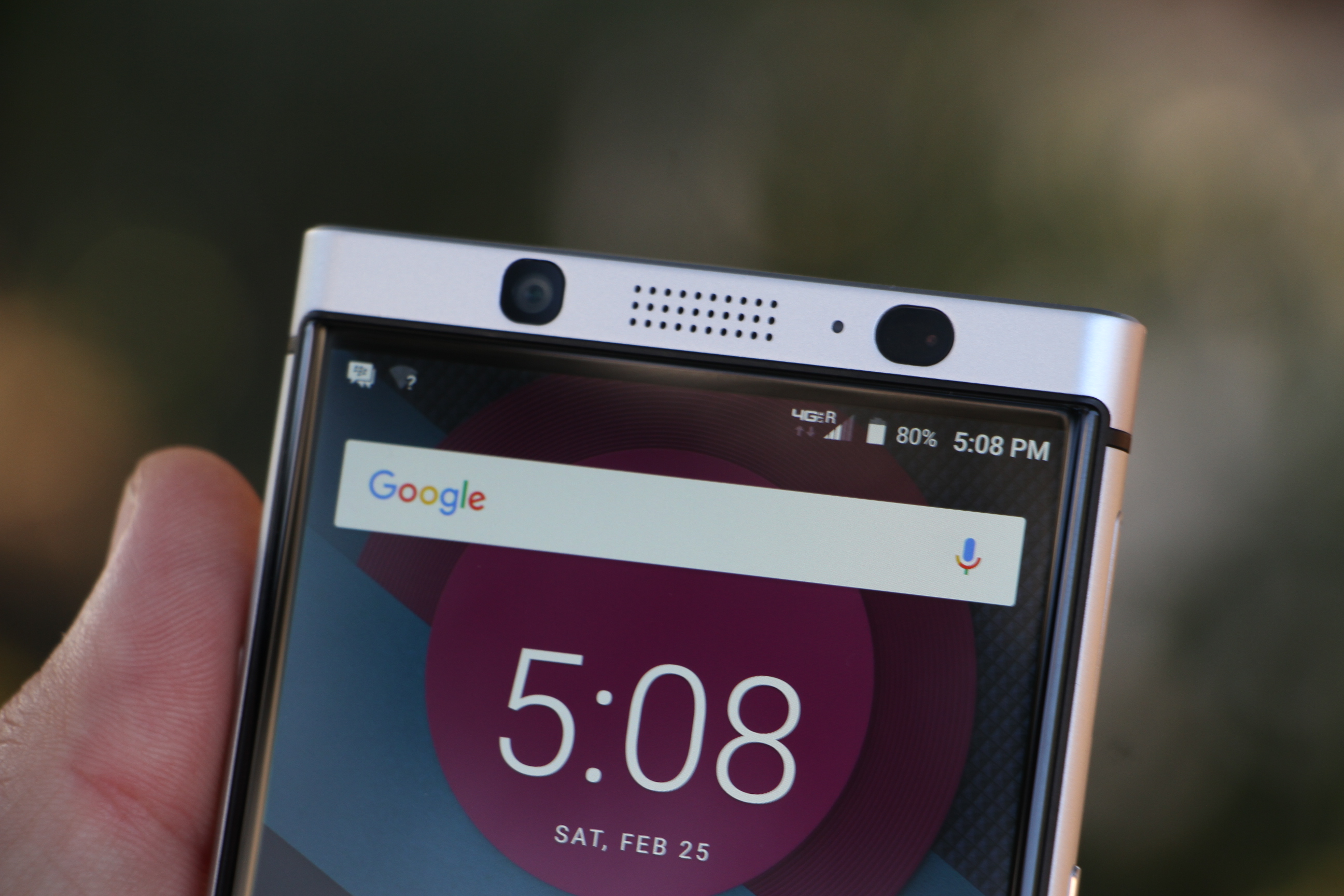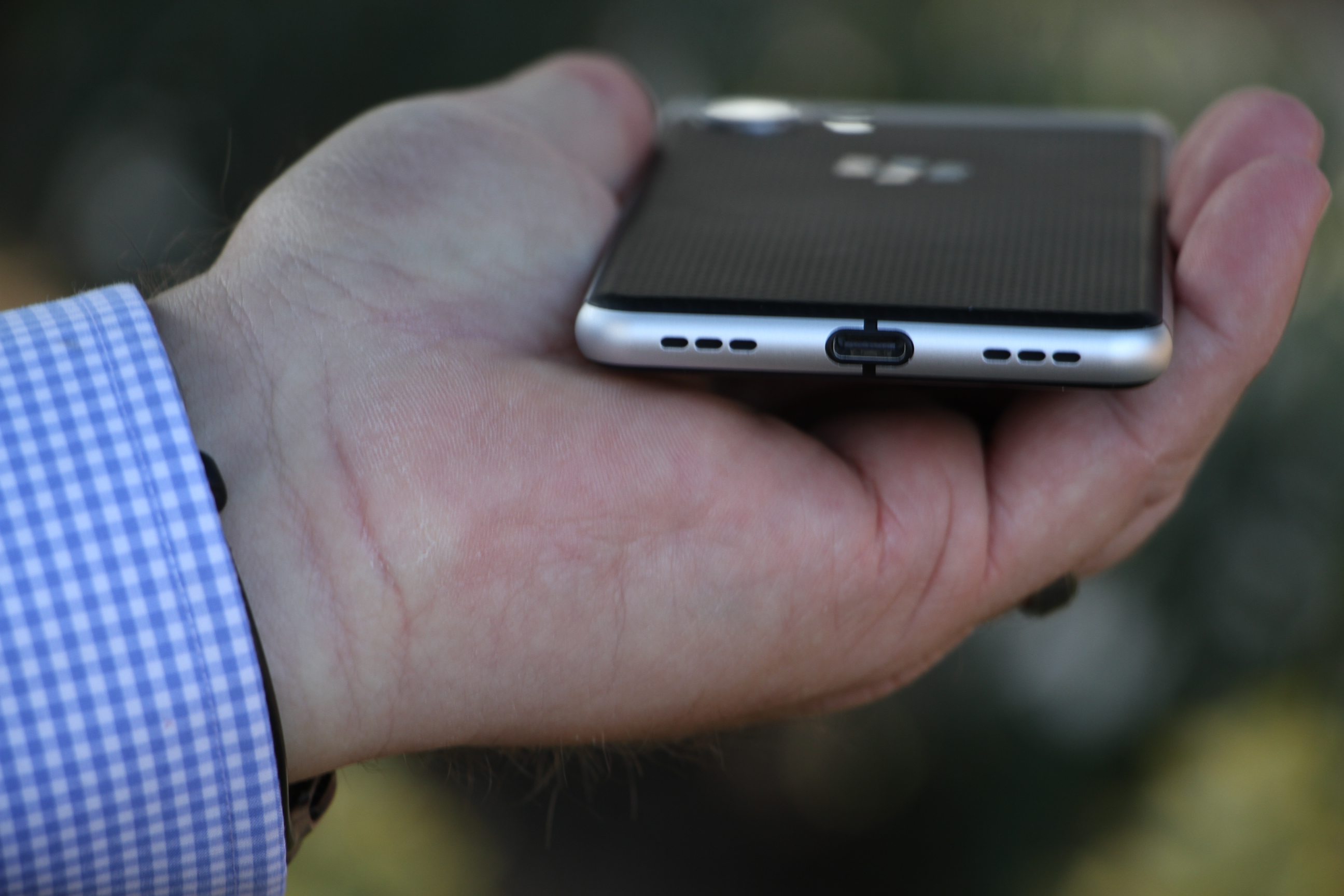If you thought the BlackBerry Mercury had a bit of a codename vibe to it, you weren’t wrong. Today at Mobile World Congress, TCL officially took the wraps of its first true BlackBerry handset, now going by the admittedly less sleek KeyOne (pronounced “key one,”) name. Though I suppose when your company is attempting to plant its flag firmly in the world of enterprise, sexy probably isn’t the main thing you’re looking for in a name.
The device looks much the same as it did when we saw it at CES, back when it shared a name with a Roman messenger god, small planet and element/poisoning you get from consuming too much seafood. TCL’s clearly gone out of its way to create something iconic that fits squarely with what most of think of when we think of BlackBerry.

It’s a tall device give its 4.5-inch screen – that owes mostly to the inclusion of the physical keyboard on the bottom, that most BlackBerry of features. New here since last time is the inclusion of a fingerprint reader in the keyboard’s spacebar, a cool little extra.
So, how many people are still looking for a physical keyboard in 2017? TCL/BlackBerry mobility GM Bruce Walpole admitted that demand is nowhere near where it was when the Canadian company’s marketshare first started eroding at the hands of the iPhone ilk. “We asked if people would consider a physical keyboard,” he told TechCrunch. “Twenty-five-percent of people said they would consider it.”
So, essentially, there’s potential demand there. “Consider” is pretty non-committal. With the KeyOne, the company has to convert “consider” into “customer,” which is always easier said than done. “No question,” Walpole answers, “but if we can capture half of that, it’s a pretty decent number.”
So, half of a quarter — a pretty modest proposal.

“It is for the person who was forced onto a flat glass but wants to come back,” says TCL’s North American President, Steve Cistulli, “There’s no compromise. In the past there, there was always a compromise, screen size, keyboards or apps. Here there’s no compromise.”
It’s essentially an Android device, loaded with BlackBerry security and software designed by TCL to appeal to both those who want a touchscreen and a keyboard. But the company will still be offering devices for those who made the jump to touchscreens and haven’t looked back.
The fact that the KeyOne will be one of a number of concurrent devices in the TCL/BlackBerry portfolio. According to Cistulli, the company is aiming to have around three devices on the market at a given time, at least one of which will be a sort of evolution of the DTEK 50/60 devices that first saw the two companies teaming up.

The KeyOne will be the first of the bunch, naturally, arriving in North America (the US and Canada, at least) in late April, priced at $549. US users will be able to buy it online at launch. The company is, perhaps unsurprisingly, focused on enterprise first, followed by “bring your own devicers.” That means it’ll take some time before getting to any kind of wider retail availability.
And perhaps if it can get it into people’s hands through their companies, it can rekindle that connection with the physical keyboard. And their current goals with the first generation device seem pretty modest like the specs inside, including the Snapdragon 625. The device will ship with Android 7.1, but Assistant won’t be preloaded.
Essentially, it’s a work-focused device and the specs reflect that, pushing things up in the battery department with a beefy 3,505mAh battery that promises a day of use.
TCL’s got an uphill battle on its hands, reintroducing the BlackBerry line to an audience with a short memory. But at the very least, it’s coming out of the gate with a pretty interesting device. “A lot of companies are specifically going after Apple and Samsung,” says Cistulli. “Most people will aim high and fall pretty fast. There is a niche though for the enterprise space.”
